Arete Climbing: 5 Tips to Climb Like a Pro in 2024
Last Updated on: 23rd January 2024, 01:42 pm
Ever seen a sharp corner of rock and thought “I need to climb that.” If so, you’ve fallen under the spell of arete climbing. But while these edges look juicy, getting to the top can be a challenge and requires some special skills.
Table of Contents
- Climbing arete meaning
- What is a climbing arete?
- Is arete climbing dangerous?
- Difference between aretes and dihedrals
- Types of arete climbing
- Arete bouldering
- Climbing aretes: 5 Tips to master
- Wrap up: Arete Climbing
Climbing arete meaning
Arete climbing is a technical style of rock climbing that involves scaling the narrow ridge or corner formed by two rock faces. Arete climbing requires moves such as heel-hooks and laybacks in order to achieve the right body positioning needed to finish the climb.
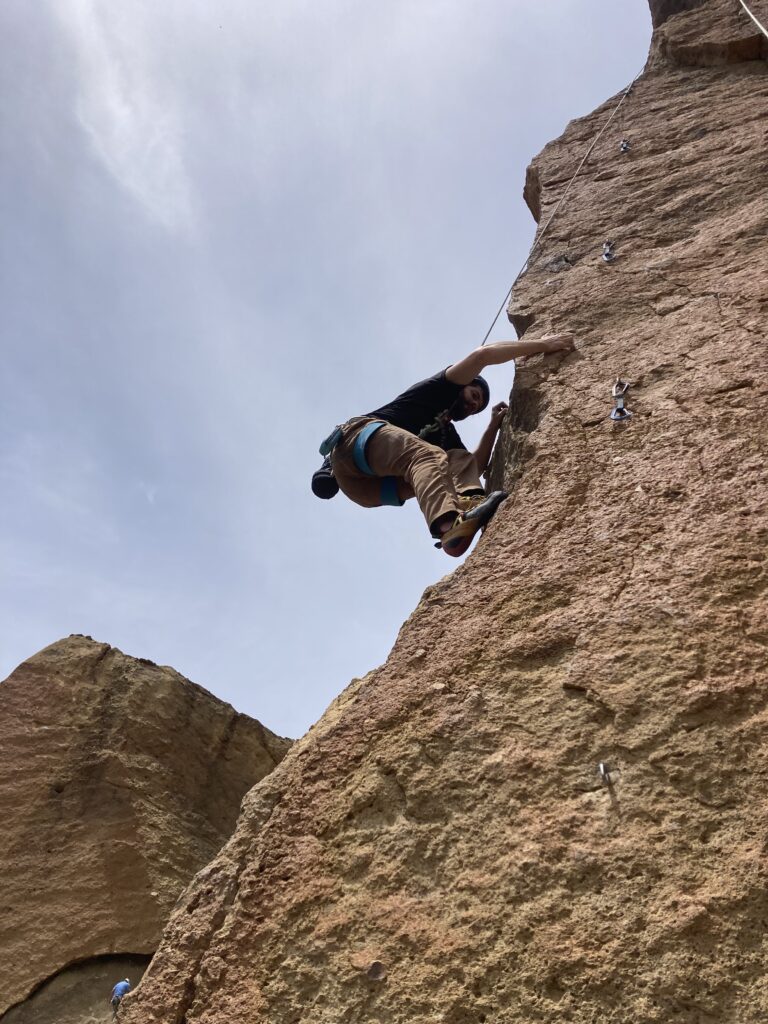
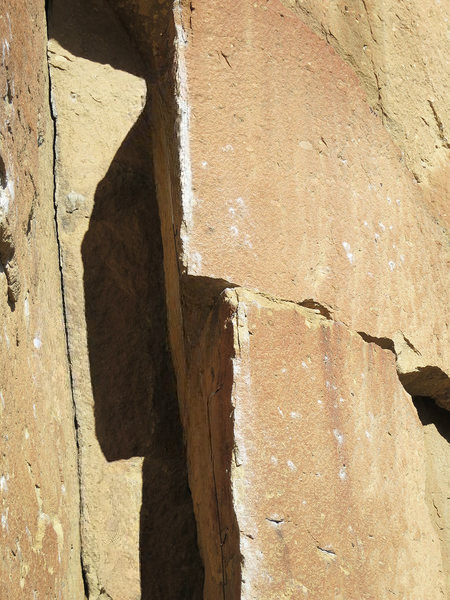
To excel in arete climbing, it’s crucial to develop both physical strength and mental fortitude to tackle the unique challenges posed by this exhilarating form of climbing.
In general, most aretes fall into the sport climbing category. This is due to the general inability for cracks to form on the corner of rocks. Of course there are some climbs that defy this rule, but in general, you’ll struggle to find trad climbing soley on aretes.
What is a climbing arete?
An arete is a corner of rock formed by intersecting faces. Think of a normal, rectangular building. If that building were made out of rock, each corner on the outside of the building (as pointed out by the red arrows below) would be considered an arête.

Arete rock climbing is often more challenging than you think. Because of the different moves required, it forces folks to try new movements they might not be used to from climbing in gyms or on face climbs. It’s not uncommon to feel an arete climb is sandbagged, or harder than the grade leads on, because the moves are so challenging.
Is arete climbing dangerous?
Climbing an arete in theory isn’t any more dangerous than other climbs if you’re careful. With that said, moving around the face can make it hard to keep track of the rope — if your leg ends up between the rope and the rock, you could flip upside down when you fall.
Even falling with the rope positioned properly can feel a little dangerous. If you’re clipped onto one side of the arete and climbing on the other, a fall might swing you a bit around the corner. It’s important to not get off route or climb too far to the right or left of your last piece of protection. As long as you stay observant, you should be able to climb aretes safely.
Difference between aretes and dihedrals
While the corners of arêtes point outwards, dihedrals form an inward corner. Dihedrals also have two faces, but their inward corner doesn’t product the same sharp edge as an arête. Instead, they will sometimes form a crack that climbers can use for hand holds or for placing gear while trad climbing.
Climbers will often use a stemming technique to create tension while climbing a dihedral, while arêtes often require heel and toe hooks to create the same effect.
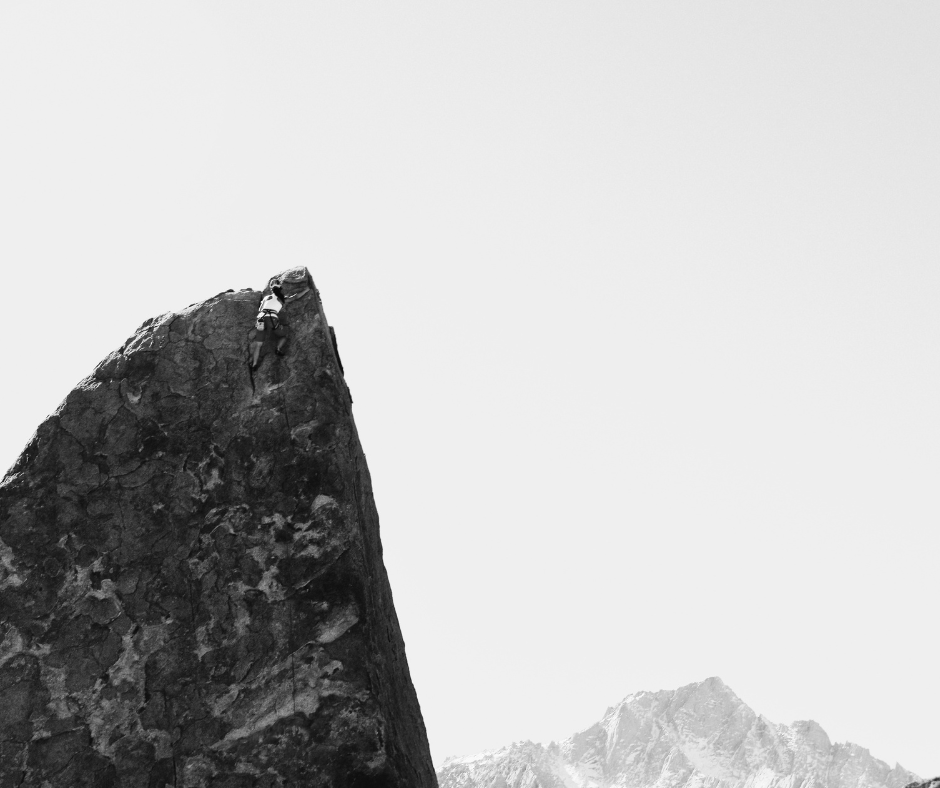
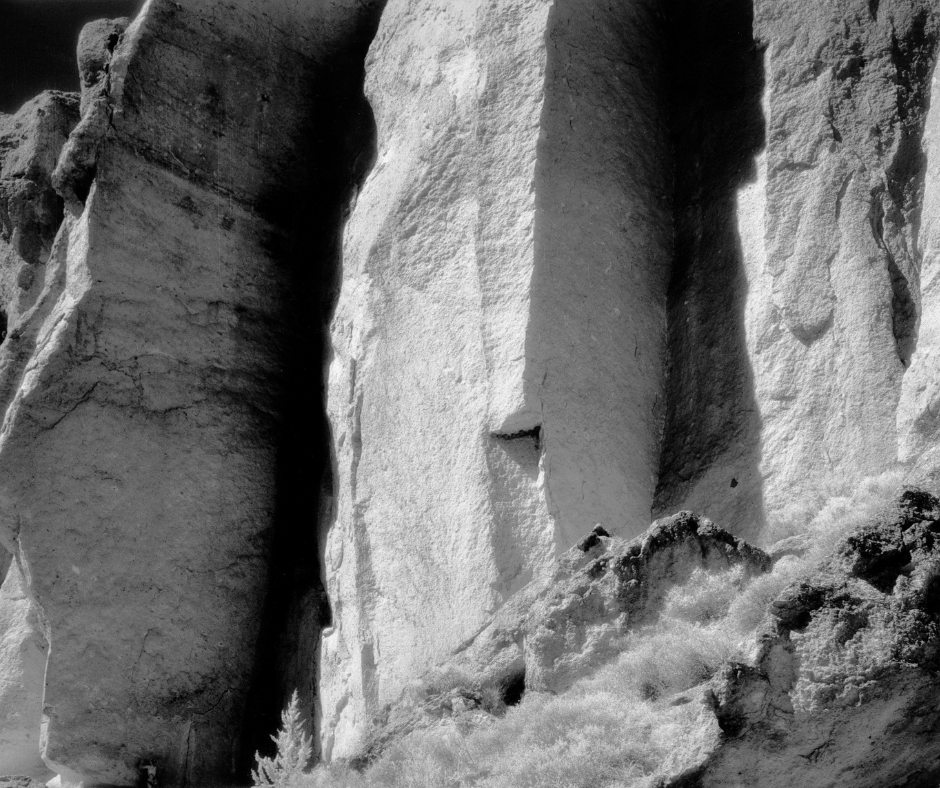
Types of arete climbing
We generally use the word arête in two different ways to refer to two different features. An arête can be
- An edge or ridge of a cliff or boulder
- A ridge on a mountain.
These are obviously similar features—sharp, pronounced edges—with the main difference being one of scale.
And then for an example of #2 as stated in the above paragraph, the first one that comes to mind is Fishhook Arête on Mt. Russell in California’s Sierra Nevada range. Here’s a photo I took of it back when I climbed Mt. Whitney in 2007:
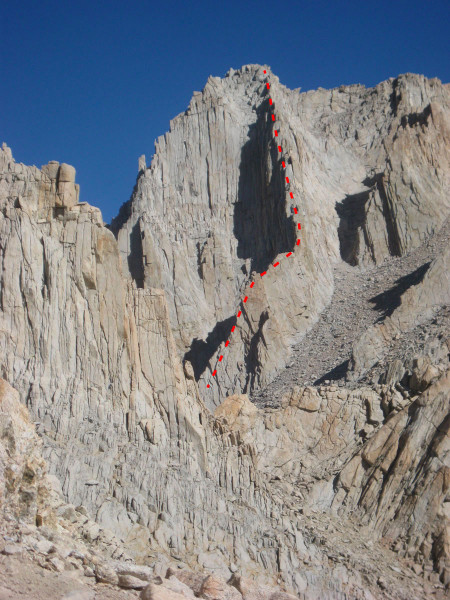
Arêtes don’t necessarily have to be steep enough to rock climb on. Here’s a hiker on Carn Mor Dearg Arete on Ben Nevis in Scotland:
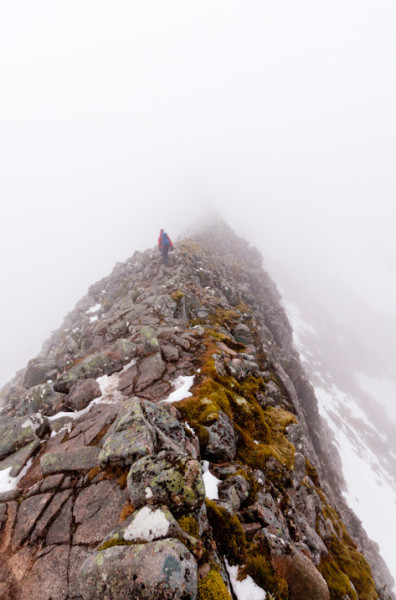
Arete bouldering
Arete bouldering involves shorter climbs on rock formations that resemble ridges or edges without a rope. To stay safe, climbers place crash pads and use a spotter in order to protect themselves from falls. To boulder an arete, climbers maintain balance and control while ascending the route and climb up on top of the boulder in order to complete the climb.
Below you can see an example of what arete bouldering looks like.
Climbing aretes: 5 Tips to master
Climbing aretes isn’t easy — it requires skill, technique, and a good head game if you’re on lead. But climbing up these narrow, exposed ridges of rock is a thrill that’s worth it. With the right approach, anyone can send their arête project.
1. Watch your feet and the rope
Let’s start with safety shall we? Depending on how the route is bolted, you may find yourself moving between the two faces sometime needing to place a foot on a hold near where your rope is hanging. While climbing arêtes on lead you run a bigger risk of getting your feet caught up behind the rope which can result in flipping upside down in the event of fall.
Always be aware of your foot placement, especially when the corner of the arête is blocking your line of site. Also beware of things like z-clipping or back-clipping if you’re reaching around the arête to clip.
2. Learn to love the layback
Laybacks are the go to move in arête climbing. Those big corners can make for a juicy hold if you can keep your body in the correct position. Work on committing to the move, getting your feet out, and really leaning backwards. If you’re doubting what move to make next on the route, a layback is a good option to try.
3. Heal and toe hooks for climbing aretes
The corner of an arête usually lends itself well to hooking your feet, especially while laying back. The momentum of you body leaning backwards naturally lifts your legs up causing an imbalance unless you can find a point of contact to connect your foot too. The corner of the arête creates plenty of space to drop a hook, pull some tension, and make your next move.
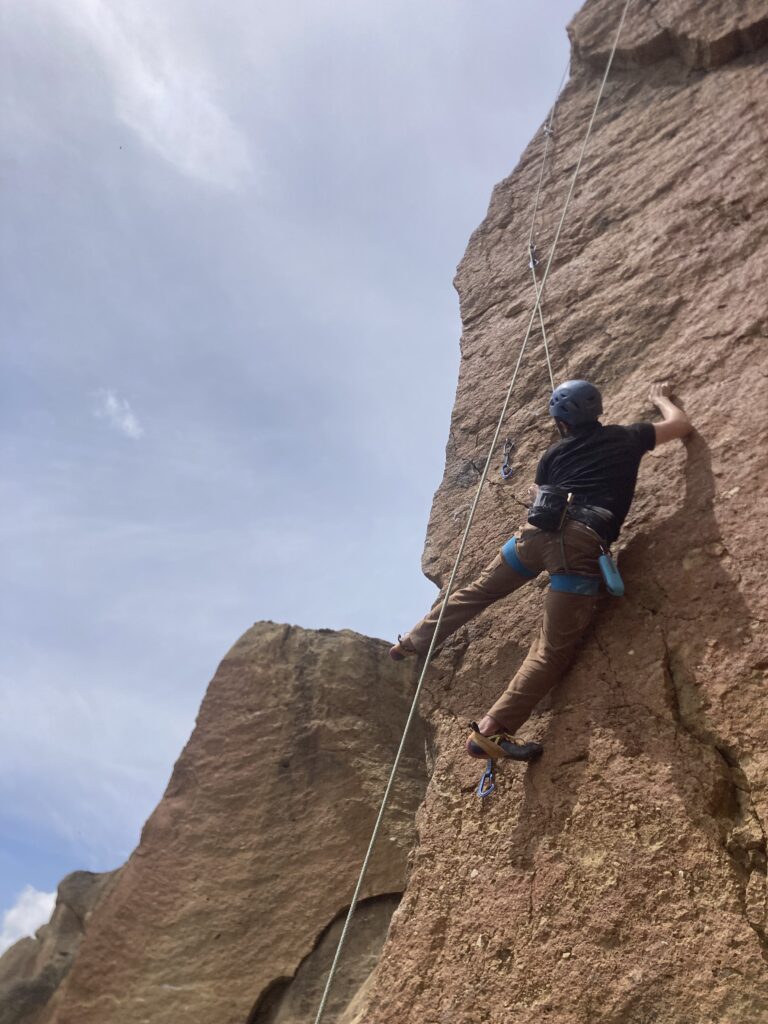
4. Beware of the barn-door
Barn-dooring is when a climber swings sideways off a wall as a result of having too much of their weight distributed towards the left or right rather than centered. This is really easy to do while climbing aretes because of the nature of the rock and climbing a corner. Do you best to keep your weight centered and when you do need to lean hard in a one direction, make sure you have a solid foot to keep you steady.
5. Know your arete’s style
Not every arete climb is going to be full of laybacks and heel hooks. Often times the corners will be notched or the faces will have features that make for great holds. Don’t be afraid to go straight up or migrate onto the face for a move or two. While the arête will seem tempting, the beta for unlocking a send lies in a hidden pocket or tiny crimp.
Wrap up: Arete Climbing
Arête are a thrilling and rewarding experience for any climber. If you approach these rocks with respect, patience, and a willingness to learn and adapt to the unique demands of this style of climbing, you’ll find yourself at the top in no time. So grab your gear, hit the rocks, and embrace the adventure — we’ll see you out there.
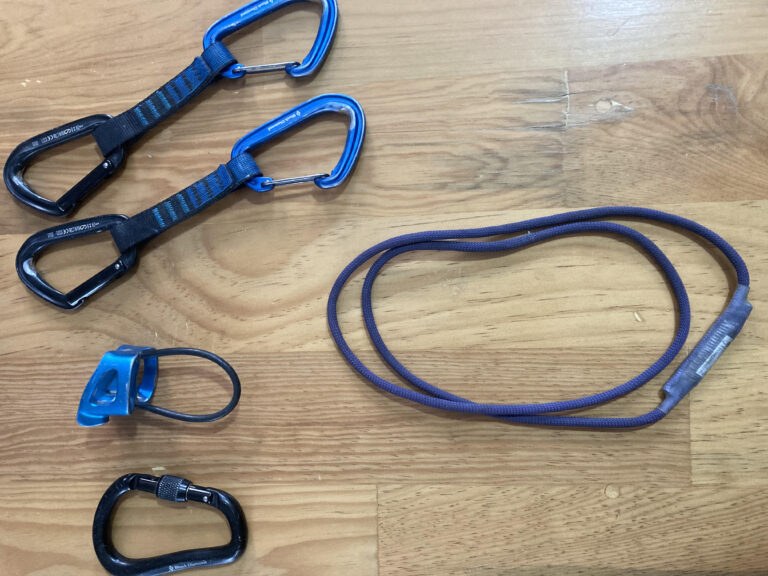

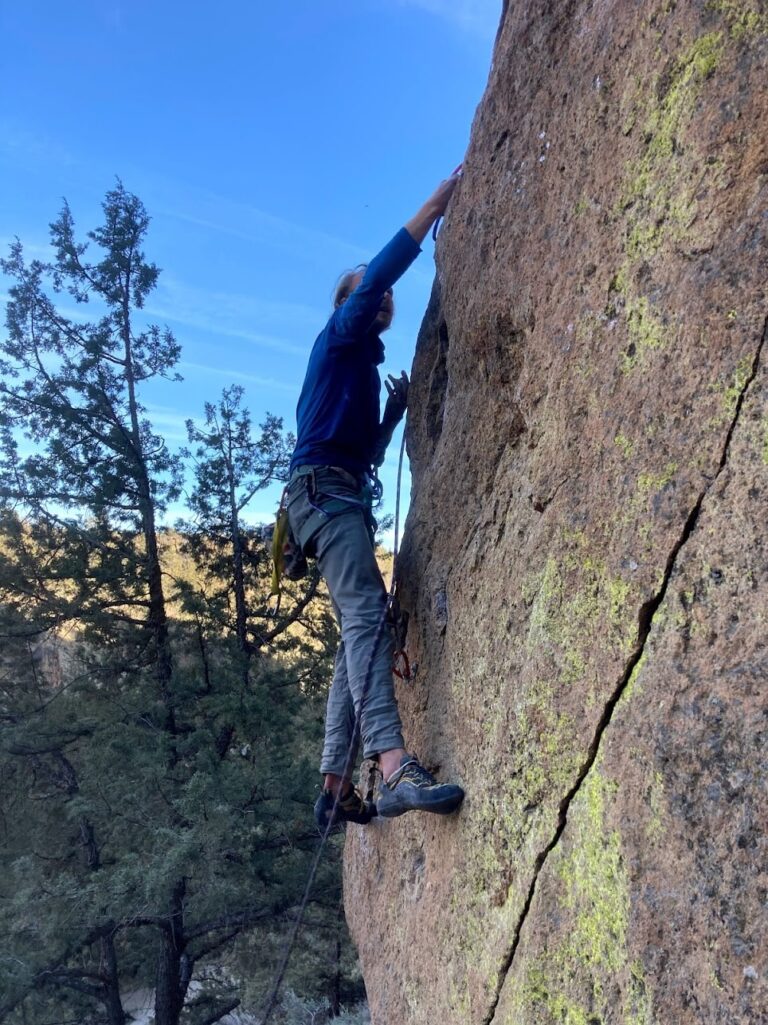

Thanks for the explanation and visuals!